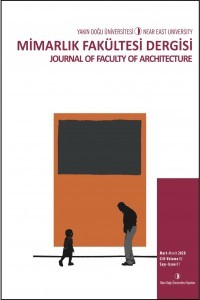The Impact of Tall Buildings within the Existing and Historical Urban Environment
Tall buildings, sustainability, existing urban environment, historical urban environment.
THE IMPACT OF TALL BUILDINGS WITHIN THE EXISTING AND HISTORICAL URBAN ENVIRONMENT
Tall buildings, sustainability, existing urban environment, historical urban environment.,
___
- Cullen, G., (1961). The Concise Townscape: Routledge. London and New York. https://doi.org/10.4324/9780080502816
- Czyńska, K. (2015). Impact of Tall Buildings on the Attractiveness of Urban Landscape-On the example of Selected European Cities. Norway Grants, 131–144.
- Czyńska, K., & Rubinowicz, P. (2017). Sky Tower impact on the landscape of Wrocław analysing based on the VIS method. DOI: 10.5277/arc170207
- Jacobs, J. (1992). The death and life of great American cities. 1961. New York: Vintage, 321- 325. DOI: 10.14361/9783839413272-099.
- Jałowiecki, B. (2007). Globalny świat metropolii. Wydawnictwo Naukowe Scholar. https://scholar.com.pl/pl/ksiazki/784-globalny-swiat-metropolii.html GLOBALNY ŚWIAT METROPOLII - Scholar
- Jasiński, A. (2008). Znaczenie budynków wysokich i wysokościowych we współczesnej urbanistyce. Przestrzeń i forma, 233-244. www.pif.zut.edu.pl/pif-10_pdf/020%20JASINSKI%20Artur%20OK.pdf
- Kosiński, W. (2011). Miasto i piękno miasta: Wydawnictwo Politechniki Krakowskiej, 14 MIASTO I PIĘKNO MIASTA – MIASTO (mliczynska.pl)
- Latour, S. (2000). Krajobraz kulturowy miast na Pomorzu Zachodnim,[w:]. Kierunki transformacji polskich miast u progu wstąpienia do Unii Europejskiej. Latour, Rewaloryzacja zabytkowych miast na Pomorzu Zachodnim czasksiazki.pl
- Local plan. LBHF.(2015). http://democracy.lbhf.gov.uk/documents/s59989/Item%206%20-%20Draft%20Local%20Plan.pdf
- Lynch, K., (1960). The Image of the City, Cambridge: MIT Press. DOI/abs/10.1177/000271626133600164
- Scott, E. D., & Wilson, L. (1999). Evidence for a sill emplacement event on the upper flanks of the Ascraeus Mons shield volcano, Mars. Journal of Geophysical Research: Planets, 104(E11), 27079-27089.
- Strelitz, Z. (2011). Tall building design and sustainable urbanism: London as a crucible. Intelligent Buildings International, 3(4), 250-268. https://doi.org/10.1080/17508975.2011.606362
- Tavernor, R., & Gassner, G. (2010). Visual consequences of the plan: Managing London’s changing skyline. City, Culture and Society, 1(2), 99-108. https://doi.org/10.1016/j.ccs.2010.06.001
- Dąbrowska-Budziło, K. (2002). Treść krajobrazu kulturowego w jego kształtowaniu i ochronie.
- Kumorek, M. (2010). Analiza rozwoju budownictwa wysokiego. Przestrzeń i Forma, (14), 91- 134. http://www.pif.zut.edu.pl/pif-14_pdf/B-03_Kumorek.pdf
- European Council of Town Planners. (2003). The new charter of Athens 2003: the European Council of Town Planners’ vision for cities in the 21st century, Lisbon, 20. November 2003. Alinea. https://patterns.architexturez.net/doc/az-cf-172768
- ISSN: 2687-2757
- Başlangıç: 2019
- Yayıncı: Yakın Doğu Üniversitesi
Shaymaa Jalil IBRAHIM, Çilen ERÇİN, Carol Kamil Toma KHARBOSH
Learning from tradition for future: Green building in Kano state, Nigeria
Mukhtar SABIU YAHUZA, Huriye GÜRDALLI
Görsel Kültürün Şekillendirdiği Geleceğin Şehirleri
Serkad Hasan IŞIKÖREN, Derin ŞİRVAN IŞIKÖREN
The Impact of Tall Buildings within the Existing and Historical Urban Environment
